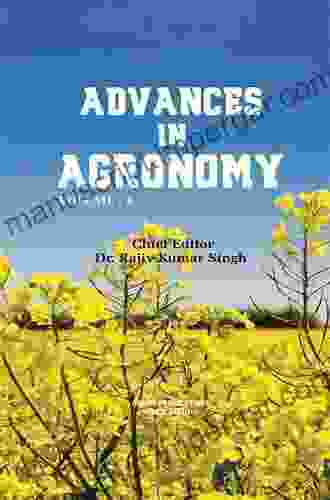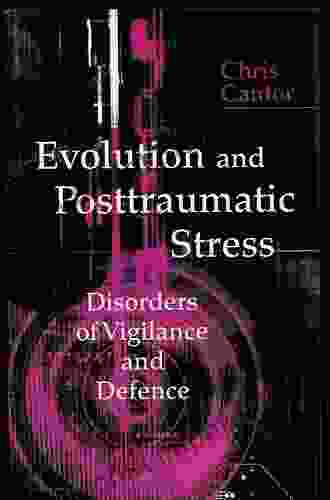Unraveling the Nexus: Exploring Posttraumatic Stress through the Lens of Evolution

The human experience is often marked by both resilience and vulnerability. One of the most significant challenges that individuals can face is posttraumatic stress disFree Download (PTSD),a debilitating condition that can arise in the aftermath of exposure to extreme or life-threatening events. PTSD can have profound implications for individuals, their families, and society as a whole. This article delves into the complex relationship between evolution and PTSD, shedding light on the intricate interplay between our biological heritage and our response to trauma.
4.5 out of 5
| Language | : | English |
| File size | : | 2196 KB |
| Text-to-Speech | : | Enabled |
| Screen Reader | : | Supported |
| Enhanced typesetting | : | Enabled |
| Word Wise | : | Enabled |
| Print length | : | 242 pages |
Evolution and the Fight-or-Flight Response
Evolutionary theory provides a framework for understanding how PTSD may have developed as a protective mechanism. In the face of danger, the sympathetic nervous system activates the "fight-or-flight" response, a physiological cascade that prepares the body to confront or escape a threat. This response, characterized by increased heart rate, heightened vigilance, and muscle tension, is essential for survival. However, in certain circumstances, the fight-or-flight response can become dysregulated, leading to PTSD.
The Role of Genetics and Epigenetics
Genetic factors play a significant role in the development of PTSD. Studies have identified variations in specific genes that may increase an individual's susceptibility to the condition. These genes are involved in regulating the stress response system, emotional processing, and fear conditioning. Additionally, epigenetic modifications, which are changes in gene expression that can be passed down through generations, have been linked to PTSD. These modifications may influence how individuals process and respond to traumatic experiences.
Neurobiological Mechanisms
PTSD is associated with specific neurobiological alterations. Trauma exposure can disrupt the neural circuitry involved in memory formation, leading to flashbacks and intrusive memories. It can also impair the hippocampus, a brain region crucial for contextual memory, contributing to difficulties in integrating traumatic experiences into personal narratives. Furthermore, the amygdala, a brain structure involved in fear processing, may become overactive in individuals with PTSD, leading to heightened reactivity to reminders of the trauma.
Resilience and Vulnerability
The development of PTSD following trauma is not inevitable. Resilience, the ability to bounce back from adversity, plays a significant role in determining an individual's response to trauma. Factors such as social support, coping mechanisms, and personal resources can enhance resilience and mitigate the risk of developing PTSD. However, certain vulnerabilities, such as a history of childhood trauma or preexisting mental health conditions, can increase an individual's susceptibility to the condition.
Treatment and Recovery
Effective treatments for PTSD have been developed, including psychotherapy and medication. Psychotherapy approaches, such as cognitive-behavioral therapy and trauma-focused therapy, aim to help individuals process traumatic experiences, develop coping mechanisms, and regulate their stress response. Medication, including antidepressants and anti-anxiety medications, can also provide relief from symptoms and improve overall functioning. Recovery from PTSD is a journey that requires time, effort, and support.
The relationship between evolution and PTSD is complex and multifaceted. Evolutionary mechanisms that once served as protective responses can become dysregulated in the context of extreme or life-threatening events, leading to the development of PTSD. Genetic, epigenetic, and neurobiological factors all contribute to our understanding of the condition. While resilience and vulnerability play significant roles in determining an individual's response to trauma, effective treatments exist to help individuals recover and regain their well-being.
4.5 out of 5
| Language | : | English |
| File size | : | 2196 KB |
| Text-to-Speech | : | Enabled |
| Screen Reader | : | Supported |
| Enhanced typesetting | : | Enabled |
| Word Wise | : | Enabled |
| Print length | : | 242 pages |
Do you want to contribute by writing guest posts on this blog?
Please contact us and send us a resume of previous articles that you have written.
 Book
Book Novel
Novel Page
Page Chapter
Chapter Text
Text Story
Story Genre
Genre Reader
Reader Library
Library Paperback
Paperback E-book
E-book Magazine
Magazine Newspaper
Newspaper Paragraph
Paragraph Sentence
Sentence Bookmark
Bookmark Shelf
Shelf Glossary
Glossary Bibliography
Bibliography Foreword
Foreword Preface
Preface Synopsis
Synopsis Annotation
Annotation Footnote
Footnote Manuscript
Manuscript Scroll
Scroll Codex
Codex Tome
Tome Bestseller
Bestseller Classics
Classics Library card
Library card Narrative
Narrative Biography
Biography Autobiography
Autobiography Memoir
Memoir Reference
Reference Encyclopedia
Encyclopedia Christopher E Forth
Christopher E Forth Fabrizio Bonani
Fabrizio Bonani Charles Franklin Thwing
Charles Franklin Thwing Christine Eiser
Christine Eiser Cheiro
Cheiro Stephen L Wright
Stephen L Wright Johan Cullberg
Johan Cullberg Steve Weidenkopf
Steve Weidenkopf Ronald J Comer
Ronald J Comer Darren Freeman
Darren Freeman Christopher Witmore
Christopher Witmore Will Bagley
Will Bagley Jim Mccarthy
Jim Mccarthy Chris Paulsen
Chris Paulsen Guillem Gilabert Oriol
Guillem Gilabert Oriol Christopher Francese
Christopher Francese Ramaji
Ramaji Kevin Metcalf
Kevin Metcalf Karen Elcock
Karen Elcock Edward Cavanagh
Edward Cavanagh
Light bulbAdvertise smarter! Our strategic ad space ensures maximum exposure. Reserve your spot today!

 Johnny TurnerAdvances in Agronomy Volume 73: Unlocking the Secrets of Sustainable Crop...
Johnny TurnerAdvances in Agronomy Volume 73: Unlocking the Secrets of Sustainable Crop...
 Casey BellDelve into the Enigmatic World of Thin Film Deposition with Our Comprehensive...
Casey BellDelve into the Enigmatic World of Thin Film Deposition with Our Comprehensive... Caleb LongFollow ·9.3k
Caleb LongFollow ·9.3k Forrest BlairFollow ·17.4k
Forrest BlairFollow ·17.4k Jayson PowellFollow ·8.1k
Jayson PowellFollow ·8.1k Jared NelsonFollow ·14.5k
Jared NelsonFollow ·14.5k Ervin BellFollow ·14.3k
Ervin BellFollow ·14.3k Harvey HughesFollow ·10.2k
Harvey HughesFollow ·10.2k Clark BellFollow ·3k
Clark BellFollow ·3k Jeremy CookFollow ·10.6k
Jeremy CookFollow ·10.6k

 E.E. Cummings
E.E. CummingsOne Man's Story of What It Meant to be Pj
In the tapestry of life,...

 Caleb Long
Caleb LongPattern Theory in Video Keno: Unveiling the Art of...
Embark on an enlightening journey into the...

 Douglas Adams
Douglas AdamsUnveiling the Diplomatic Landscape: The Ottoman Empire,...
Delving into the History...

 Terry Bell
Terry BellThere Still Is No Off Season: Embracing Year-Round...
In a world consumed by routine and the allure...

 Ibrahim Blair
Ibrahim BlairBrain Teasers Games and Puzzles: Exercise Your Mind with...
Prepare to embark on a captivating journey...
4.5 out of 5
| Language | : | English |
| File size | : | 2196 KB |
| Text-to-Speech | : | Enabled |
| Screen Reader | : | Supported |
| Enhanced typesetting | : | Enabled |
| Word Wise | : | Enabled |
| Print length | : | 242 pages |









